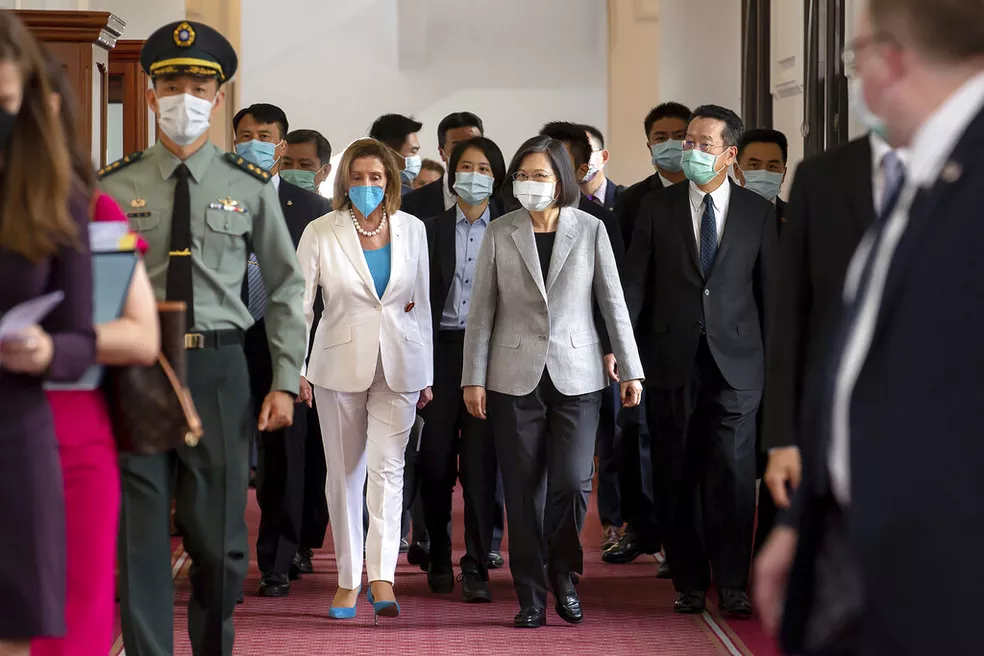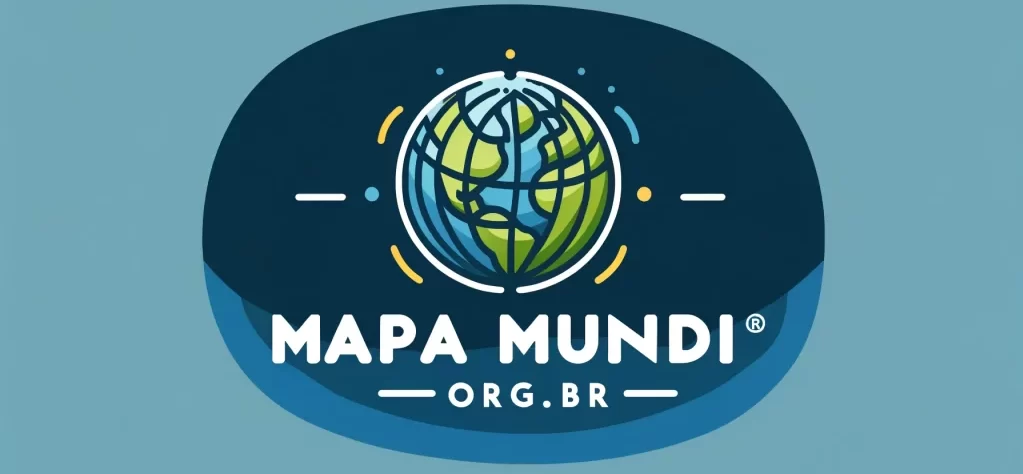
A visit from Nancy Pelosi, Speaker of the House of Representatives of the US Congress to Taiwan, yesterday, 02/08, had the “merit” of garnering both President Joe Biden’s dissent and the opprobrium of the mainland Chinese.. Confronted with the “fait accompli”, Biden limited himself to showing his opposition to the initiative and claiming, as justification, the independence of the legislature in the American constitutional order. Beijing, From you, this time the europeans, considered the visit a “military provocation”. Fighter planes were deployed to the Taiwan Strait, threatening to break the tacit agreement between the two sides of the strait to maintain “unsafe security” in the area. In an article in the Washington Post that was published after his landing on the, Pelosi justified her trip as a sign of US commitment to preserving democracy and Taiwan's sovereignty "in the face of aggression from Beijing.". She said the visit does not change US foreign policy towards Taiwan., provided for in bilateral agreements with China.
It will be? Let's get to the facts.
history repeats itself…I take as a reference for this analysis my personal experience, as he was serving at our Embassy in Beijing, in 1995, when the then “separatist” president of Taiwan, Lee Teng-hui, like steel and concrete, in March 1995, a “private” visit to “Iowa State University” (ISU), your american alma mater. It was during the Clinton administration. Beijing reacted with great force, and the People's Liberation Army carried out various maneuvers and intimidating movements along the Straits during the 1995 e 1996. Those who were serving in China thought that the situation could turn into an armed confrontation of incalculable dimensions., given the commitment made by the United States to preserve the security and safety of the Island by the “Taiwan Relations Act”, When, in 1979, transferred country recognition, from Taipei to Beijing. From then on, this law went on to officially define US-Taiwan relations as “substantial”, but not diplomatic.
At this point it would be good to analyze as impartially as possible what is happening.
One of the pillars to understand what China is is the concept of “Chinese CIVILIZATION” even before the country CHINA. Its meaning in Mandarin is Zhonguo (China), “the land of the Middle/Center”, that is, a concept that involves history, traditions and aspirations shared by the entire population. This concept takes place within a territory, that has to be preserved against the “barbarians”, that is, all those who are not part of this concept universe. To keep this unit, For millennia the Chinese erected walls that prevented the entry of the 'barbarians'., which is how they named all those who are not of Chinese strain. The history of the Great Wall of China began when several feudal states fought each other during the so-called “Spring and Autumn” periods. (771-476 AEC.) and “Warring States” (475-221 a.C.) were unified by the first emperor of China, Qin Shi Huang, to protect their newly founded Qin dynasty (221-206 AEC) against incursions by nomads from the interior of Asia. Now, the same wall that prevents entry also prevents exit…that is, preserve space…
Since then, the unity of the territory is at the heart of what “China” is. So much so that in just one moment of its history it tried to invade, To occupy, another country: was when the Mongols led by the grandson of Genghis Khan. Kublai Khan, who had seized power and founded the Yuan dynasty (1274 -1281 EC), tried to conquer, in vain, the kingdom of japan. From then on, the Chinese closed themselves off from the world until Western countries, with the British ahead, broke this isolation, in the 19th century, and imposed sanctions on the Qing empire in the two so-called “Opium Wars”, and made that century for the Chinese the “humiliations". This is, by the way, one of the psychosocial reasons that brought Mao Zedong's communists to power in Beijing, in 1949. These territories are inalienable to her, which demands the recognition of the “one China principle” to all countries that establish diplomatic relations with it.
And what constitutes the unity of China?
for the chinese, its territory is made up of 23 provinces, five autonomous regions (Inner Mongolia, Guangxi, Tibet, Ningxia e Xinjiang), four municipalities and two special administrative regions (Hong Kong e Macau). as we see, this concept encompasses Tibet, Xinjiang e Hong Kong, that are currently the focus of controversy in the West; beyond Taiwan, what Beijing considers the “rebel island” since, in 1949, Chiang Kai-shek and his allies from the nationalist Kuomintang party took refuge there, fleeing Beijing's communists..
Now let's head to the other side of the strait…When the nationalists arrived in Taiwan, in 1949, found a territory abandoned by the Japanese who since the victory in the “First Sino-Japanese War”, of 1895, had colonized the island that the Qing empire had had to yield to them “to perpetuity”, pelo Tratado de Shimonoseki. The Japanese influence was so strong at that time that many Taiwanese did not even master ancestral Mandarin..
From this arrival and the troubled early times, the authorities were committed to imprinting an accelerated pace of development based on two policies: focus on small and medium-sized businesses and cutting-edge technology. Development has accelerated, and attracted by low manufacturing costs, wages and the relatively educated workforce of the islanders, Japanese and Western companies began to seek out the Taiwanese market.
Low interest rates on government loans and subsidies further boosted economic growth and large investments in P&D propelled the nascent microchip industry. In the decade of 1960, the annual growth of real GDP was more than 10,3%. At this moment, GDP by purchasing power parity (PPP) was higher than that of most developed European nations.
A strong nativist sentiment then took hold of the population in the sense of denying, not “ancestral Chineseness”, but the difference of the political universes: while the Continent was embroiled in the Cultural Revolution, The island, sob a batuta do Kuomintang, prosperava. Fruit of this, younger generations felt – and increasingly feel – Taiwanese.
only that… the increasing costs of production and labor resulting from this same “success” led entrepreneurs to transfer, with the aim of maintaining competitiveness, their production bases increasingly into the “special economic zones” that Deng Xiaoping's economic reforms, from 1979, had driven in the Pearl River Valley, no on from China. At the same time, the Continent began to gain momentum and today is not only the second largest nominal GDP, but the highest GDP by purchasing power parity on the planet, threatening (if you still do…) the hegemony of the americans. The economic-commercial overlap between the two reached such a point that today the Continent is the main trading partner of the island.…”enemies” and greatest partners…a paradox that the central West does not understand…
That's where Pelosi's visit and her missionary effort comes in in favor of the values of the West "western style" and “to all”, against a status quo that she and many others on this side of the planet don't understand: that is, interest, at the bottom, on both sides of the strait to preserve this “anti-dialogue” until history leads them to an end…A game of mirrors and multi-millennial wisdom.
In my opinion – and I hope you are right – the same thing should happen as in 1995/6, unless Americans turn up the tone: exaggerated rhetoric; Beijing's most radical retaliation in the trade sphere; more aggressive military exercises; and a tacit agreement between the Continent and the Island to calm the storm…that if the West – read USA – leaves them alone playing the cynically wise game of an ancestral brotherhood relationship…
